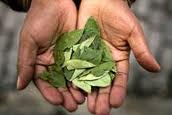Nutraceuticals from the Andes and Amazonia
Click here for:
--
Science and Patents for Quinua
--
Science and Patents for Amaranth
--
Science and Patents for Sacha Inchi
--
Science and Patents for Tarwi
'Nutraceutical', a portmanteau of the words 'nutrition' and 'pharmaceutical', is a food or food product that provides health and medical benefits, including the prevention and treatment of disease. The term 'nutraceutical' was originally defined by Dr. Stephen L. DeFelice, founder and chairman of the Foundation of Innovation Medicine (FIM), Crawford, New Jersey.
Health Canada defines the term as, "A nutraceutical is a product isolated or purified from foods that is generally sold in medicinal forms not usually associated with food. A nutraceutical is demonstrated to have a physiological benefit or provide protection against chronic disease."
Such products may range from isolated nutrients, dietary supplements and specific diets to genetically engineered foods, herbal products, and processed foods such as cereals, soups, and beverages.
With recent developments in cellular-level nutraceutical agents, researchers, and medical practitioners are developing templates for integrating and assessing information from clinical studies on complementary and alternative therapies into responsible medical practice.
Examples include beta-carotene and lycopene; as well, there are mixtures, such as Plumpy'nut for treating malnutrition. Nutraceutical foods are not subject to the same testing and regulations as pharmaceutical drugs. The following is an incomplete list of foods with reported medicinal value:
- Antioxidants: resveratrol from red grape products; flavonoids inside citrus, tea, wine, and dark chocolate foods; anthocyanins found in berries
- Reducing hypercholesterolemia: soluble dietary fiber products, such as psyllium seed husk
- Improved arterial health: soy or clover (isoflavonoids)
- Lowered risk of cardiovascular disease: alpha-linolenic acid from flax or Chia seeds
In addition, many botanical and herbal extracts such as ginseng, garlic oil, etc. have been developed as nutraceuticals. Nutraceuticals are often used in nutrient pre-mixes or nutrient systems in the food and pharmaceutical industries.
In 1989, the U.S. National Research Council published a 440 page book, "Lost Crops of the Incas: Little Known Plants of the Andes with Promise for Worldwide Cultivation", with chapters on roots and tubers (achira, ahipa, arracacha, maca, mashua, oca, potatoes, ulluco, yacon), grains (kaniwa, kiwicha, quinoa), legumes (basul, nuñas, tarwi), vegetables (peppers, squashes), fruits (berries, capuli cherry, cherimoya, goldenberry, highland papayas, lucuma, naranjilla, pacay, passionfruits, pepino, tamarillo) and nuts (Quito palm, walnuts). The book is available for free online at: Lost Crops of the Incas.
return to top